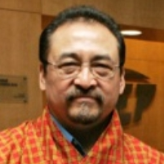Bhutan
Bhutan has been occupied since about 2000 BC, but little is known of its prehistory. Bhutan was a patchwork of small warring fiefdoms until the early 17th century, when the area was unified by the Tibetan lama and military leader Shabdrung Ngawang Namgyal, who fled religious prosecution in Tibet. Border tensions with British India in the 18th and 19th centuries were settled by treaty in 1865. Two decades later, internal strife was settled by the ascension of the Wangchuck family to power, followed in 1907 by a decision to make that family the hereditary monarchs of Bhutan, which they remain today. A 1910 treaty allowed Great Britain to “guide” Bhutan’s foreign relations, an arrangement that was continued in 1947 by placing newly independent India in Britain’s role. Despite its geographical isolation, Bhutan is a member of the United Nations, and has foreign relations with 22 countries, including the European Union, with missions in India, Bangladesh, Thailand, and Kuwait. However, Bhutan has no formal relations with several major powers, including the United States, Russia, China, the U.K. and France. In the past several decades, Bhutan’s kings have fostered a gradual transition to democratic governance, culminating in a new constitution in 2005 and the country’s first ever parliamentary elections in 2007 and 2008.
 Penjo, Daw
Penjo, Daw
Bhutan has been occupied since about 2000 BC, but little is known of its prehistory. Bhutan was a patchwork of small warring fiefdoms until the early 17th century, when the area was unified by the Tibetan lama and military leader Shabdrung Ngawang Namgyal, who fled religious prosecution in Tibet. Border tensions with British India in the 18th and 19th centuries were settled by treaty in 1865. Two decades later, internal strife was settled by the ascension of the Wangchuck family to power, followed in 1907 by a decision to make that family the hereditary monarchs of Bhutan, which they remain today. A 1910 treaty allowed Great Britain to “guide” Bhutan’s foreign relations, an arrangement that was continued in 1947 by placing newly independent India in Britain’s role. Despite its geographical isolation, Bhutan is a member of the United Nations, and has foreign relations with 22 countries, including the European Union, with missions in India, Bangladesh, Thailand, and Kuwait. However, Bhutan has no formal relations with several major powers, including the United States, Russia, China, the U.K. and France. In the past several decades, Bhutan’s kings have fostered a gradual transition to democratic governance, culminating in a new constitution in 2005 and the country’s first ever parliamentary elections in 2007 and 2008.
 Penjo, Daw
Penjo, Daw







Comments